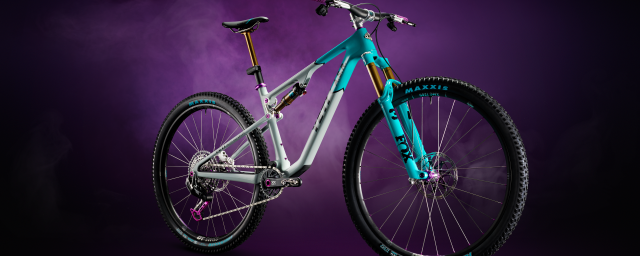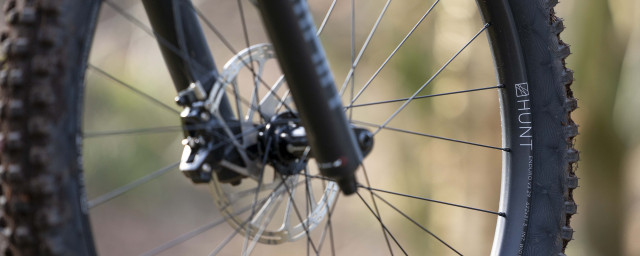Gravel bike geometry: everything you need to know

Appearances can be deceiving and none more so, in cycling, than when it comes to the best gravel bikes. Although these on-trend frames might look like road bikes with larger tyres, they are designed and engineered for different purposes. We’ll take you on a deep dive into gravel bike geometry, to show how and why these frames work differently from road and cyclo-cross bikes.
Gravel bikes aren’t the first drop-bar bikes to venture off-road. Cyclo-cross racing is a popular winter training alternative for northern hemisphere riders. But those frames are designed to excel at powering up short, grassy climbs not to mention be easy to shoulder or carry upstairs and over obstacles. Cyclo-cross bikes are shorter than gravel bikes, with steeper head angles.
Geometry is the mathematical foundation that predicts frame performance, for a specific riding purpose. Small changes yield significant outcomes on any frame’s geometry chart. Altering tube angles by only half a degree can dramatically reposition a rider on the bike. Or change its steering performance and terrain interaction.
Gravel bike geometry: it’s all about the angles
Visual inspection can be deceiving when comparing frames in a store or at your local coffee stop but place two geometry charts next to each other, tabulate the numbers, and you can start to understand how different values influence performance. There is no ‘absolute’ geometry. Only geometries that prioritise different aspects of frame performance.
The most fundamental measurements on any frame are seat angle, head angle, bottom bracket and wheelbase. On a gravel bike frame, the interplay of these angles and measurements is the way engineers solve the issue of a drop-bar bike that needs to perform across an array of all-terrain surfaces.
Gravel bikes go everywhere. They roll road miles and a lot of gravel and corrugated dirt roads. Even smooth singletrack trails. The challenge is to create a comprehensive geometry that isn’t too compromised on any of those surfaces.
Gravel bike geometry: why road bike geometry can’t be ‘all-terrain’
The risk with transposing road or cyclo-cross geometry to gravel bikes is that drafting and lightning-quick steering feedback aren’t that beneficial in gravel riding. Road bikes are short for a simple reason: riders need to gain any possible aero or positional advantage in a group. And that means riding desperately close to another rider’s wheel.
Shorter bikes are inherently more nervous to any rider input. Or change in terrain surface. Not ideal for a gravel bike design. Long dirt road descents are a given with any gravel bike adventure ride. And that means an unpredictable surface. With loose pebbles. Stones. Corrugations. And surface tramlines, where the soil has shifted during rain and been baked into place afterwards.
For a gravel bike rider to enjoy the most comfortable and confident descending experience, stability is the first among equals, in the geometry equation. A longer wheelbase bike is always more stable. The more frame you have between the wheels, the less they’ll influence each other. On a gravel bike, you can impact a surface imperfection with the front wheel and find the steering impact to be less sudden than it would be on a road bike.
Gravel bike geometry: mastering tricky terrain with slower steering
A guiding principle with gravel bike geometry is to prevent terrain from steering the bike. The longer wheelbase reduces that sense of ‘nervousness’ when descending a rough surface at speed. It also has an interesting ride quality benefit. For decades, steel frame riders have championed the virtue of thin-walled chromoly tubing and its intrinsic value in reducing fatigue on a long ride - especially when the riding surface is less than perfect.
With a gravel bike being longer, it packages more tube material than a road bike for any given size. If the frame material is selected and treated to optimise vibration absorption, having more of it on a comparatively longer gravel bike frame will increase ride comfort.
Head angle is the other geometry value that defines and differentiates a gravel frame from that sleek aero road bike. The engineering and leverage theory with head angle is simple: steeper steers quicker and slacker steers slower. But why would you want a less responsive bike? With slower steering?
On any gravel bike ride, there is a likelihood of rolling over surface changes and obstacles (stones, rocks, roots), which could defect your front wheels. When your front tyre clips a stone or gravel road tramline, it requires a corrective steering input from the rider. And the slower that terrain surface deflection happens, the more margin you have to make an appropriate steering correction with the handlebars.
Gravel bike geometry: why gravel bikes are so much slacker
Gravel bikes have a slacker head angle compared to road bikes. How much slacker? Quite a lot. The leverage influence of a crown-to-axle measurement on your fork means that even a small change in head angle value will have a prominent effect on steering dynamics.
Compare the geometry of Specialized’s Roubaix road bike to the brand’s Diverge gravel bike, and the difference in head angle is significant. The Diverge measures at 71.75-degrees, and a Roubaix is 73.5. That’s a difference of 1.75-degrees, which in mountain biking would qualify as a category-changing value for any frame. The difference between a trail and enduro mountain bike is the same as that between a road and gravel bike, illustrating just how meaningful head angle geometry differences are.
Short stems and wider drop handlebars complete the gravel bike geometry puzzle, regarding head angles and steering feedback. These cockpit geometry choices complement the slacker head angle’s calmer terrain feedback. It gives a gravel bike rider more leverage through the handlebars, to control a big front wheel deflection when rolling through a series of dirt road corrugations, or stones, at speed.
off.road.cc on WhatsApp
All the latest offroad cycling news, tech and buying advice straight to your phone.Follow our WhatsApp channel here
The cockpit and head angle geometry differences between a road and gravel bike also account for the presence of bags. You’ll never carry a handlebar or frame bag on a road bike. But gravel bikes do. On those adventure riding weekends, gravel bike riders add a handlebar or frame bag to carry gear, nutrition, spares or clothes.
Loading weight on the handlebars or frame alters a gravel bike’s centre of gravity. To counter that, the leverage of wider drop handlebars, paired with a short stem, helps stabilise the steering dynamics of a laden gravel bike when descending tricky terrain.
To the novice rider, a gravel and road bike might look curiously similar, but the geometry charts place them in very different product segments. And the numbers that are easiest to table as evidence of that are head angle, handlebar width and stem length.














1 comments
"Small changes yield significant outcomes on any frame’s geometry chart. Altering tube angles by only half a degree can dramatically reposition a rider on the bike. Or change its steering performance and terrain interaction. "
Disagree, with repsect. Half a degree is worth about 5-6mm on the front-centre or saddle setback, it's a minor tweak that most of us won't notice and tolerences in mass production might vary that much. And head angle is one part of steering - fork offset and weight distrribution are equally important. Difficult to simplify/generalise when you're looking at a combo of HTA, fork offset and overall front-rear weight distribution, stem + bar dims, etc. In short we shouldn't fixate on a number and should try to get a feel for how well balanced the total geometry is.